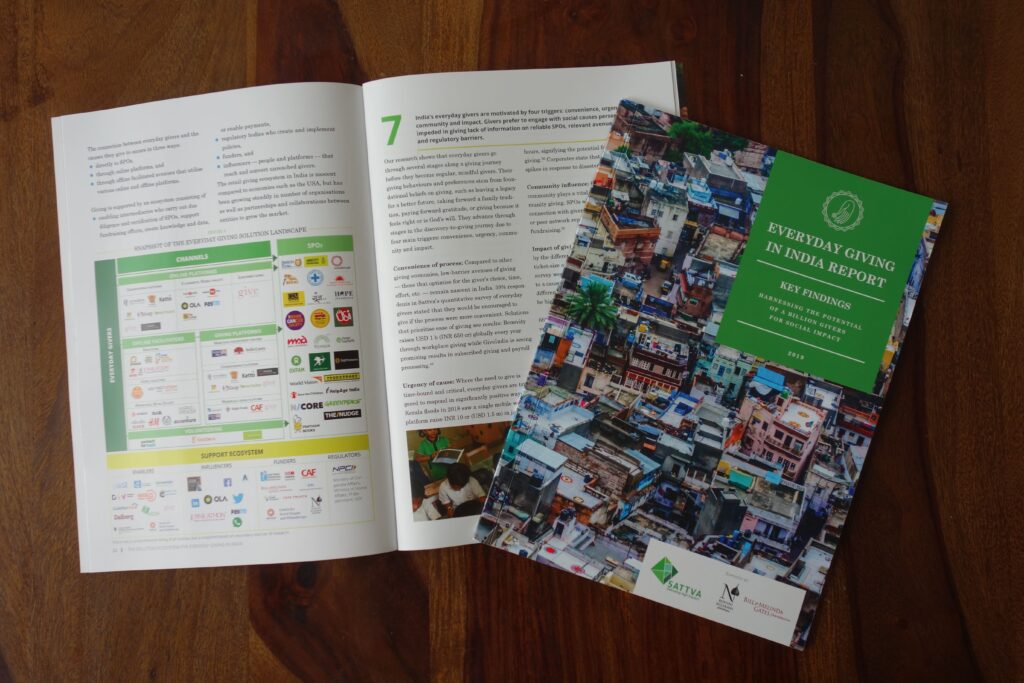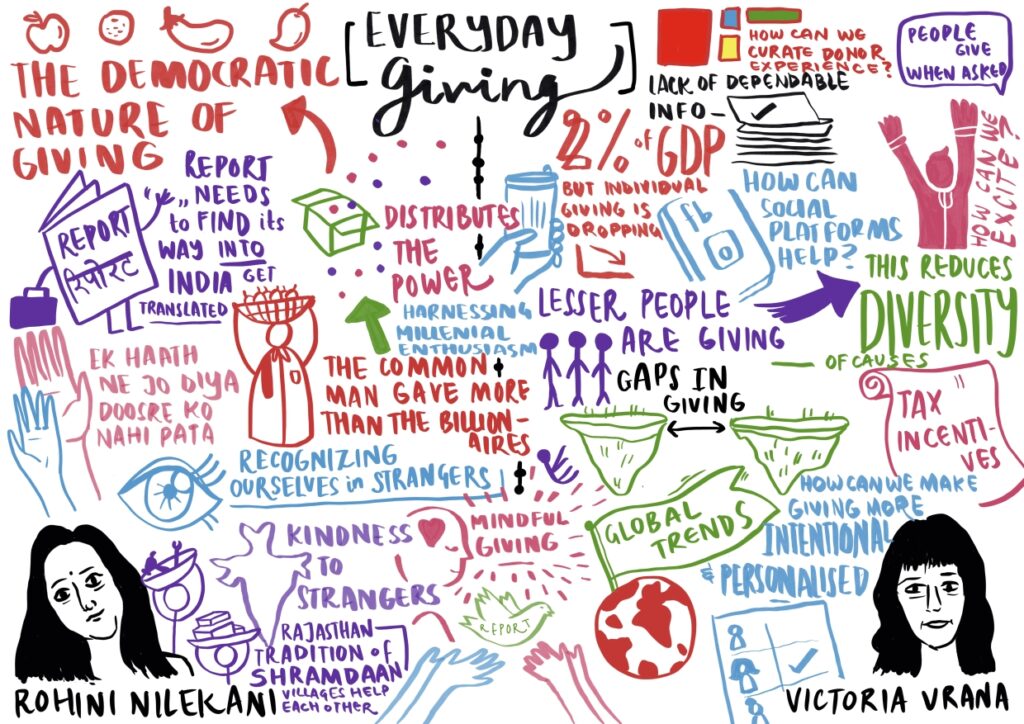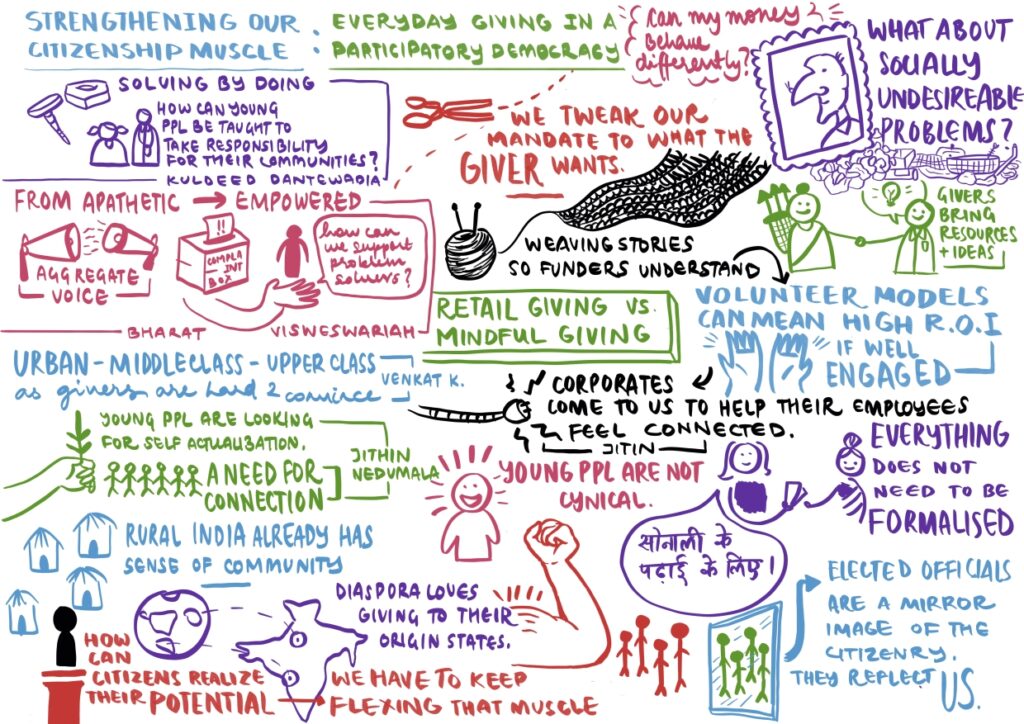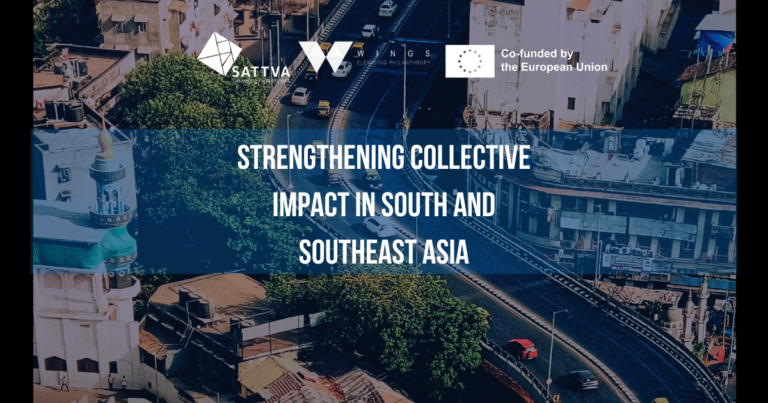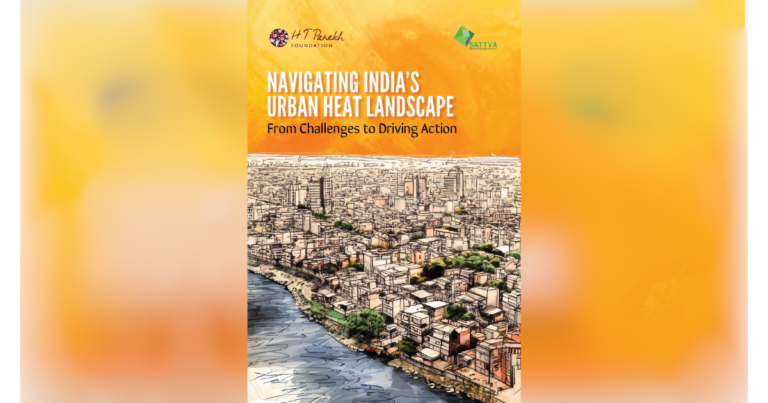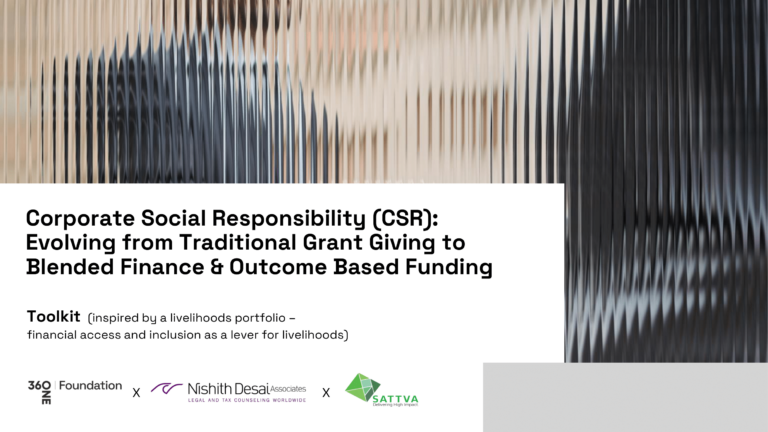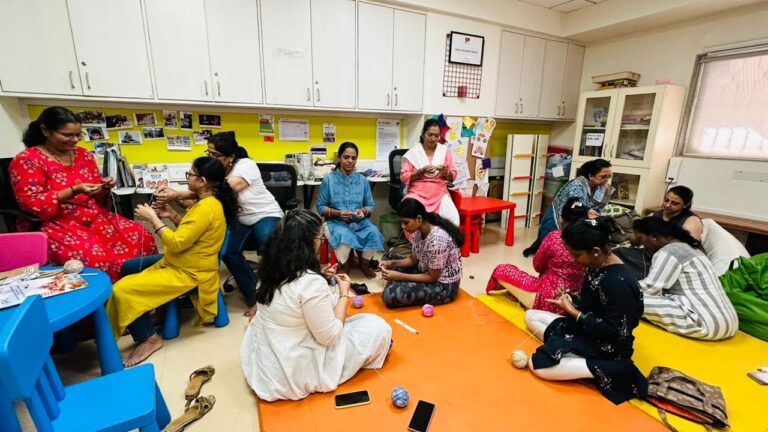Everyday Giving in India: Harnessing the potential of a billion givers for social impact:
A Research Study
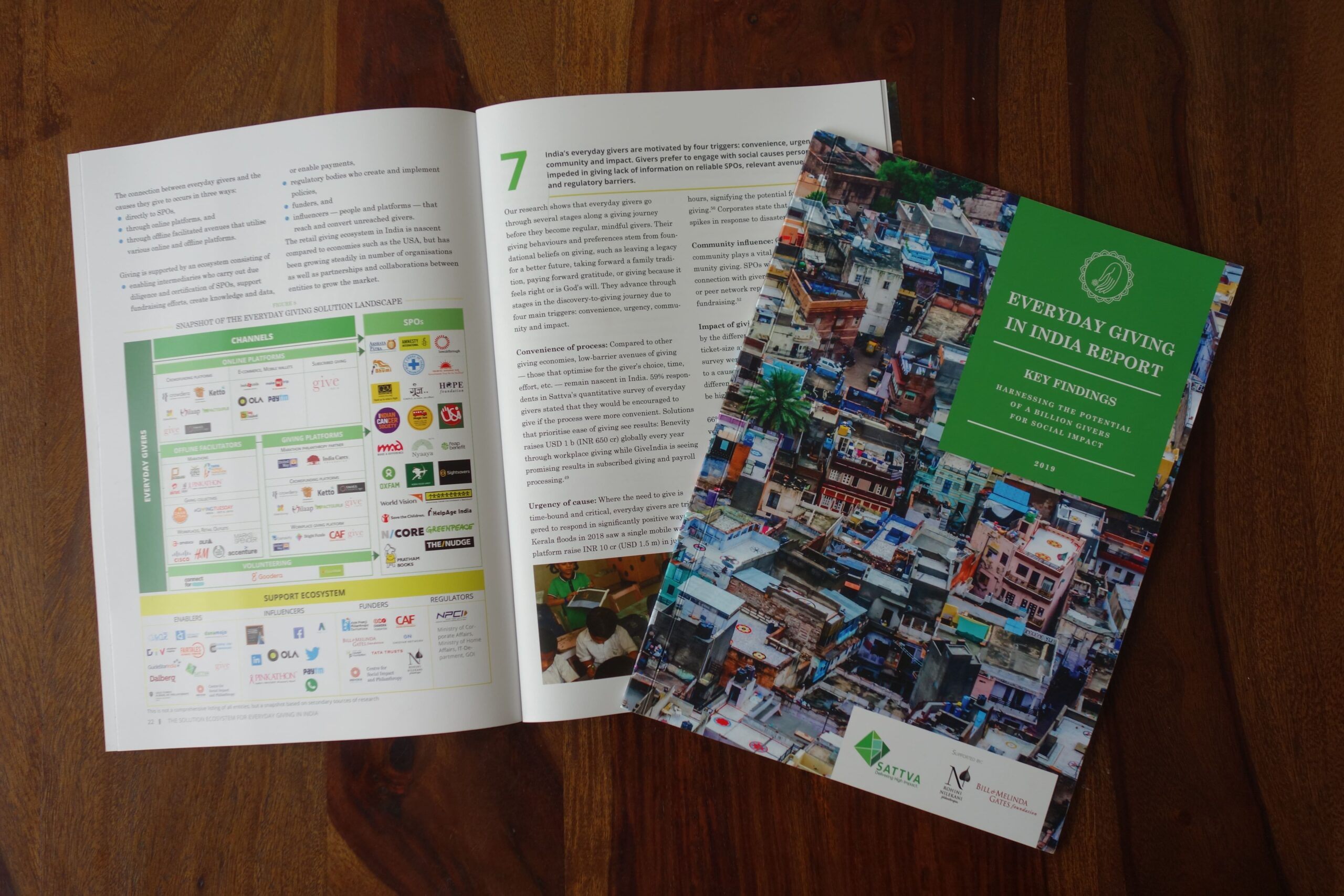
Background
India has always had a long and rich culture of individual giving, largely to religion and community, and more recently, social development. For a country with potentially a billion givers, the contours of the ‘everyday giving space’ — giving by ordinary citizens contributing time, money, voice, skills and more in India — has remained an unknown.
From September 2018 to April 2019, Sattva undertook a first-of-its-kind study on the everyday giving ecosystem in India, with the support of the Bill & Melinda Gates Foundation and Rohini Nilekani Philanthropies.
The study is a first attempt at obtaining a deeper look into the everyday giving market and ecosystem in its entirety — estimates of the market size, characteristics of the givers, online and offline giving channels, the NGOs that engage with retail givers, and enablers, their practices, successes and barriers.
We believe India has a nascent formal giving ecosystem, but has the potential to grow this significantly in volume and value. We hope this report proves useful in understanding the everyday giving space in India and brings home actionable recommendations for philanthropists, NGOs, CSR, Indian diaspora communities, and enablers, to further unlock the untapped potential of everyday givers.
Key Findings
- India has a rich tradition of everyday giving and citizen engagement. In 2017, everyday givers contributed ~INR 34k cr (USD 5.1 b) to community, religion, disaster-relief and charitable causes. Over the last decade, citizen engagement and volunteering have grown rapidly in India, bearing potential to increase giving through engagement.
- In contrast to other prominent social economies such as the USA and China, 90% of India’s EG is informal giving to religion and community. Only INR 3.5k cr / USD 528 m (10%) goes to Social Purpose Organisations (SPOs), making it a mere 6% contribution to total philanthropic giving in India.
- Over 80% of EG to SPOs is acquired through offline telemarketing and face-to-face interactions, but online and mixed channels are growing steadily, backed by rapid growth of digital shopping and payments, and millennials wanting to give back.
- Formal EG to SPOs could leapfrog to become a significant contributor to total philanthropic giving in India in the next 3-5 years. Indian residents and diaspora’s growing earning capacity, and response to nascent digital giving innovations in payroll giving, crowdfunding and e-commerce-based giving could be central to this growth.
- India’s everyday givers are motivated by four triggers: convenience, urgency, community and impact. Givers prefer to engage with social causes personally but are impeded in their giving by lack of information on reliable SPOs, relevant avenues for giving, and regulatory barriers.
- Most Indian SPOs tap into retail giving only when other funding streams are inaccessible. Some leverage external opportunities or international expertise while only a few do so because citizen engagement is core to their mission.
- Giving channels embrace the unique challenges of Indian everyday giving for effective solutioning. While online channels are growing at ~30% CAGR, offline channels dominate in the Indian context.
- The support ecosystem of influencers, funders, enablers and regulators play a critical role in creating a tipping point for Indian EG.
- In order to achieve the potential for everyday giving in India and build a sustainable culture of citizen engagement, we believe it is important to (a) recognise that meaningful engagement is critical to increase giving, (b) take into account the Indian realities of EG and design for them, (c) leverage mainstream communities and existing consumer behaviours, and (d) move givers to mindful ways of giving.
The key findings can be accessed in a report snapshot below.
The full report can be accessed below.
A technical appendix with detailed market calculations can be accessed below
This is a first attempt at uncovering the everyday giving market in India. We deeply appreciate your feedback, comments, and suggestions. Please write to us at knowledge@sattva.co.in
Event: A Billion Givers – a participatory dialogue on ‘Everyday Giving in India’ with the giving ecosystem
Sattva Research unveiled ‘Everyday Giving in India: Harnessing the Potential of a Billion Givers for Social Impact’ at ‘A Billion Givers: Harnessing the potential of India’s everyday people for impact, a participatory dialogue on everyday giving in India on April 24, 2019.
The event was conducted with the objective of delving deeper into the insights and recommendations of the report and building much-needed conversation around individual giving in the country.
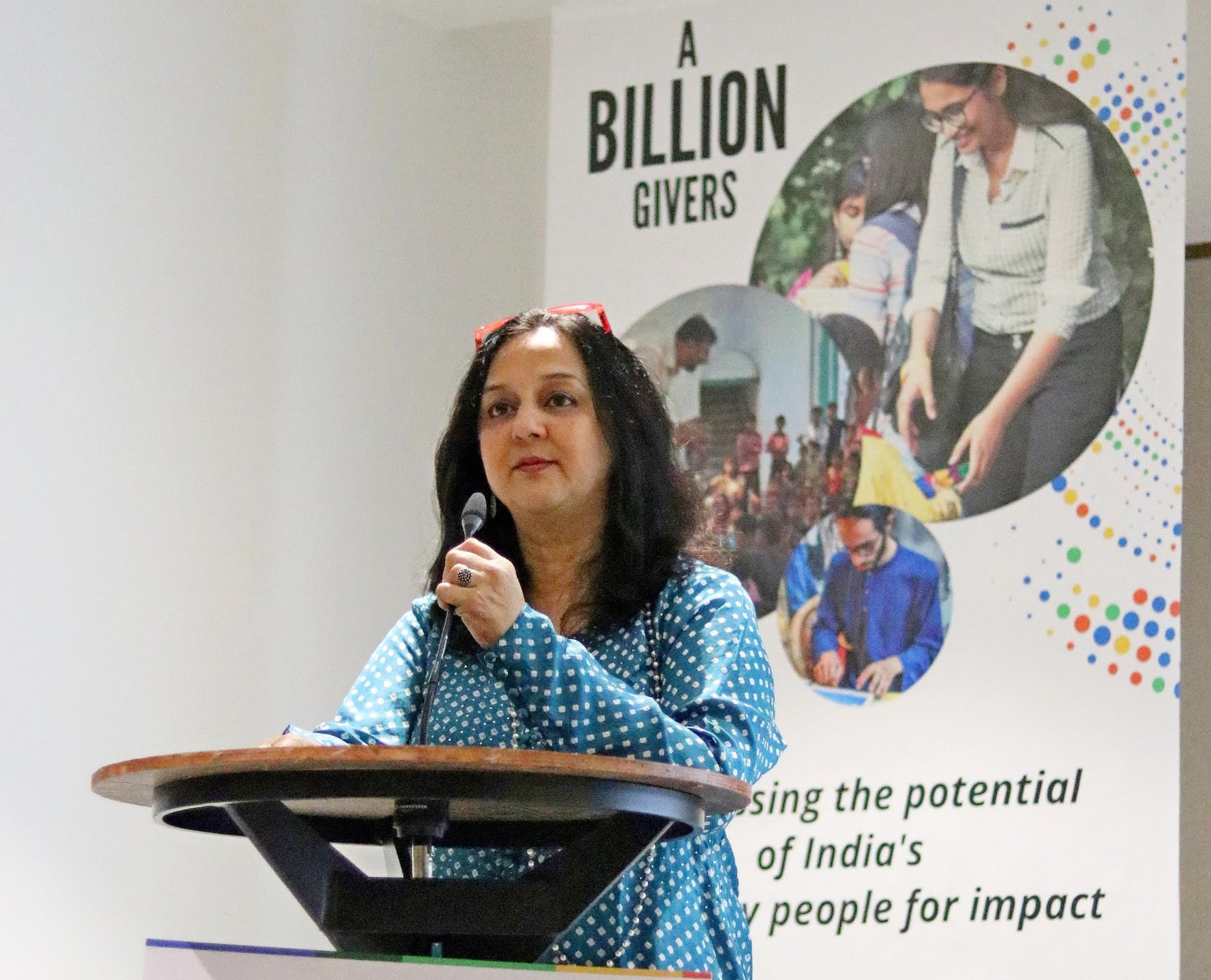
A Billion Givers saw the coming-together of over 130 representatives of NGOs, enabling platforms, funding entities and channels who participated in robust panel discussions on topics such as ‘Strengthening our citizenship muscle: Everyday giving in a participatory democracy’ and ‘Innovation and growth potential of the formal everyday giving market in India’.
The event was proud to host philanthropist Rohini Nilekani, who delivered a rousing keynote address on the democratic nature of giving and the importance of citizen engagement, and Victoria Vrana, Deputy Director, Policy, Systems and Giving by All, Bill & Melinda Gates Foundation who shared insights on giving trends across the world, and how the Everyday Giving in India study is filling a data-gap in philanthropic giving for India.
Key takeaways from Rohini Nilekani and Victoria Vrana’s addresses were illustrated in a live doodle by Ladyfingers Co.
Thought-leaders in the giving ecosystem share their experiences and envision the future of everyday giving in India
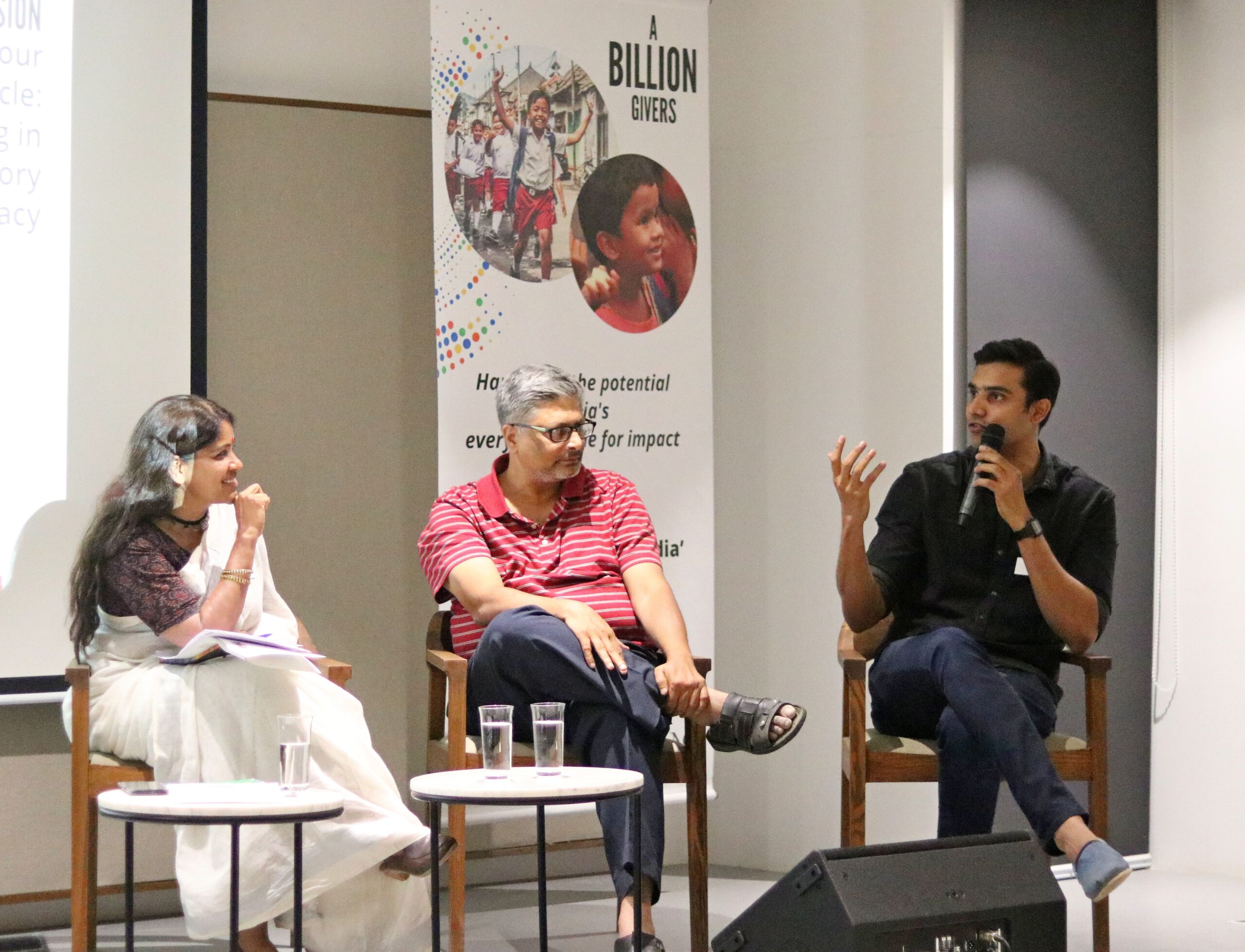
L to R: Vasanthi Hariprakash, Pickle Jar, Venkat, social evangelist and Jithin Nedumala, Make a Difference
Jithin Nedumala of Make a Difference, Kuldeep Dantewadia of Reap Benefit, Venkat Krishnan, the social evangelist and Bharath Visweswaraiah of Omidyar Network discussed the hows of retail giving and realising the giving potential of citizens with Vasanthi Hariprakash of Pickle Jar, the lively moderator for the panel.
Key takeaways from the panel on “Strengthening our citizenship muscle: Everyday giving in a participatory democracy” were illustrated in a live doodle by Ladyfingers Co.
This was followed by an insightful discussion on growth potential of the everyday giving market in India with some of the biggest innovators in the giving ecosystem today – Anoj Viswanathan of Milaap, Varun Sheth of Ketto, Atul Satija of GiveIndia, Piyush Jain of Impact Guru, and moderator for the panel, Rathish Balakrishnan of Sattva.
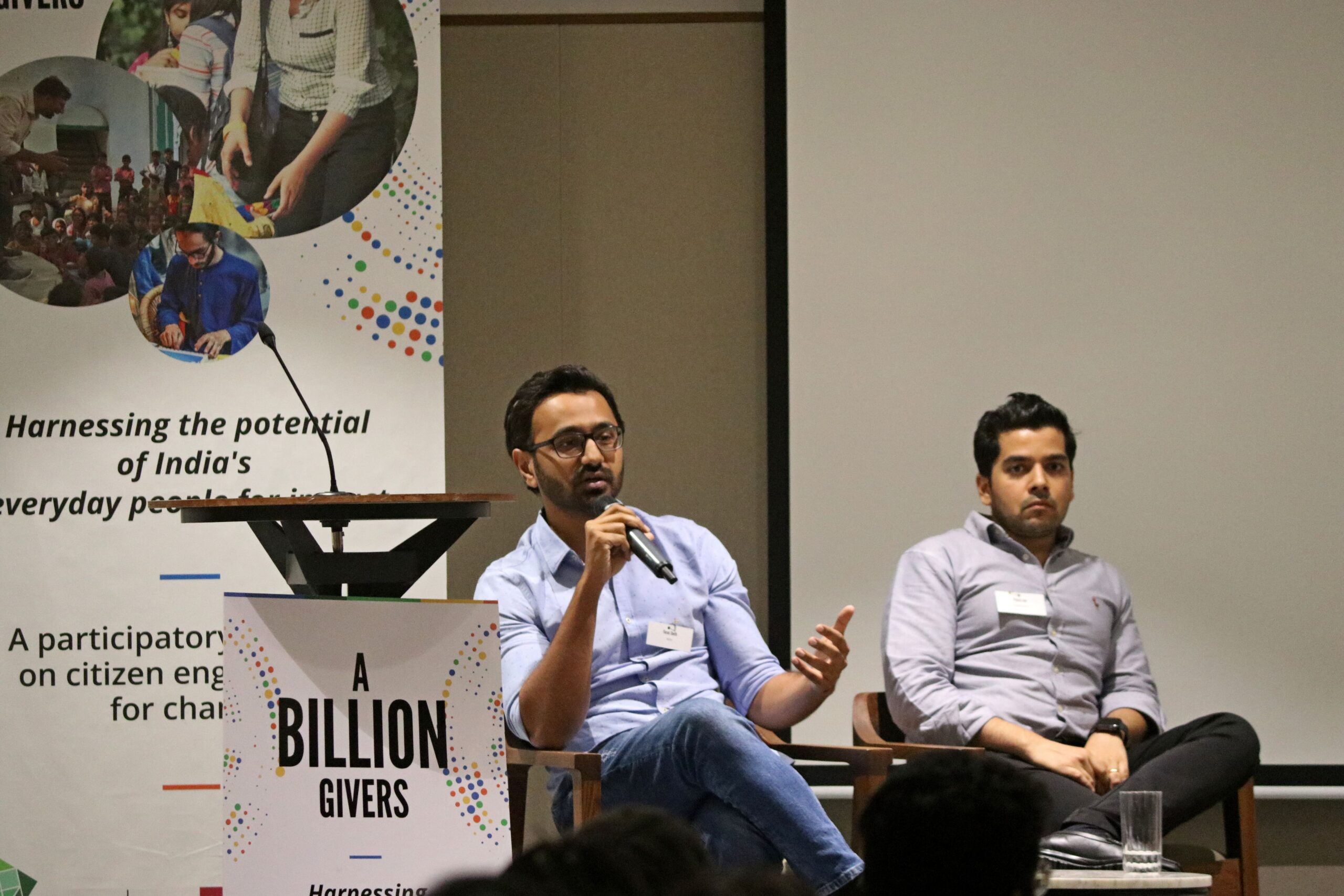
L to R: Varun Sheth, Ketto and Piyush Jain, Impact Guru
Key takeaways from the panel on “Innovation and growth potential of the formal everyday giving market in India” were illustrated in a live doodle by Ladyfingers Co.
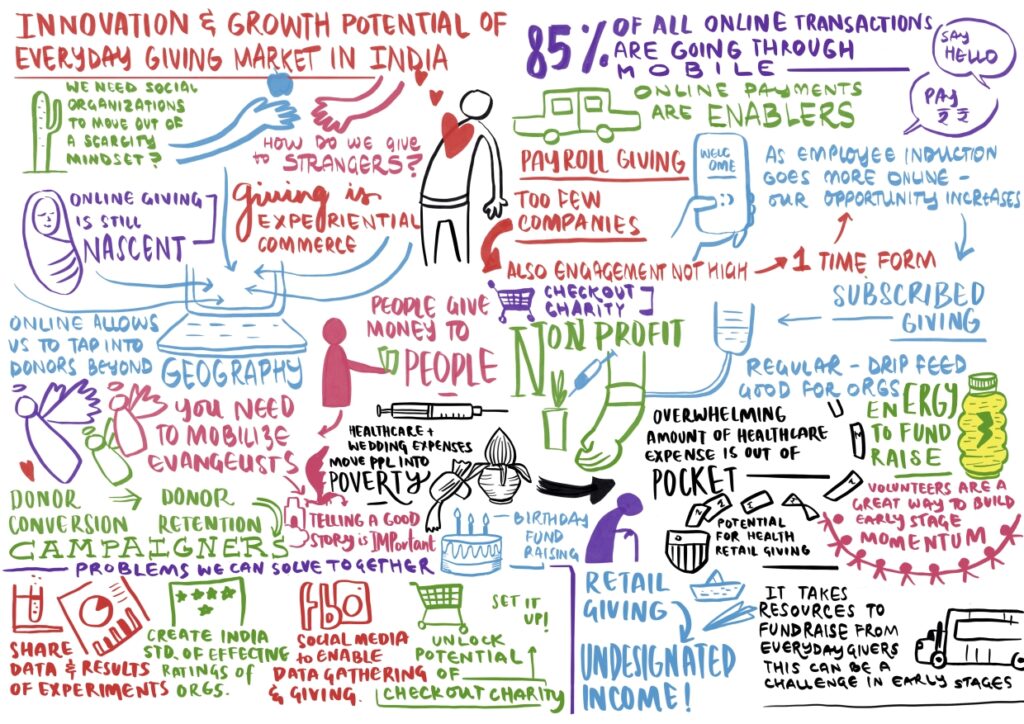
Would you like to partner with us to further the conversation around everyday giving in India? Let’s talk. Write in to knowledge@sattva.co.in
Media Coverage
India’s everyday givers are motivated by impact and urgency – The Hindu
The largest study on India’s everyday giving market – India Development Review
Gates Foundation, Nilekani bat for more formal philanthropy – Times of India
Rohini Nilekani and Gates Foundation along with Sattva launch flagship report on the state of ‘Everyday Giving in India – My City Beats
